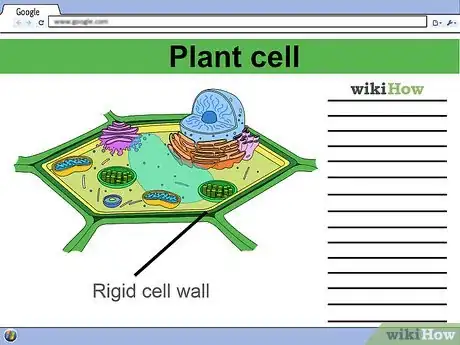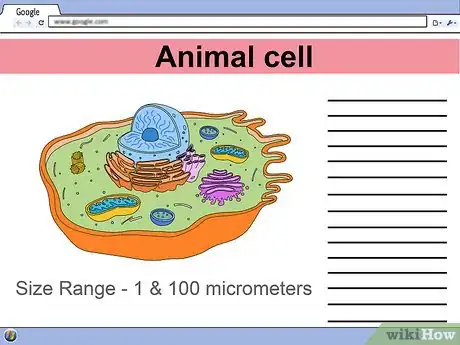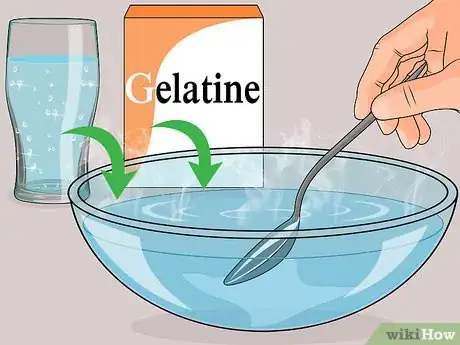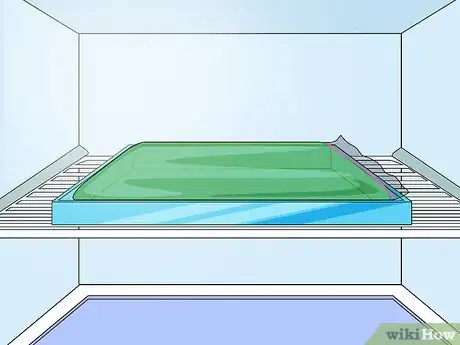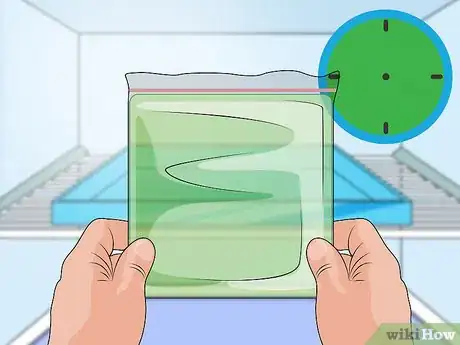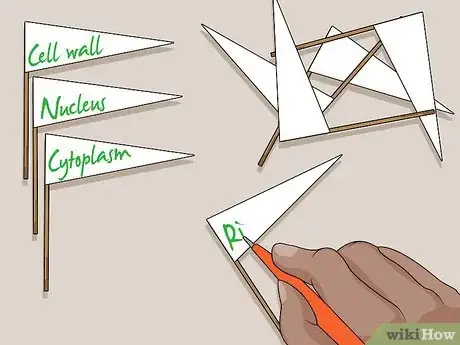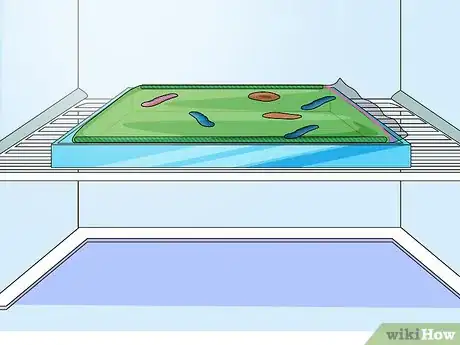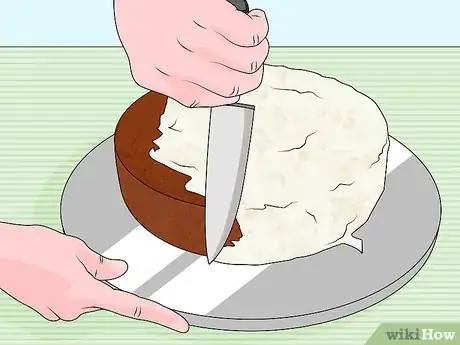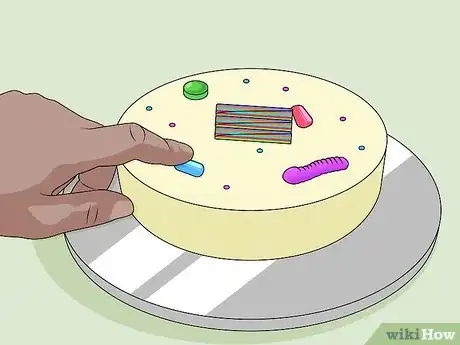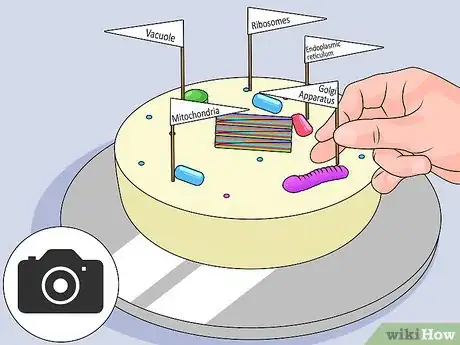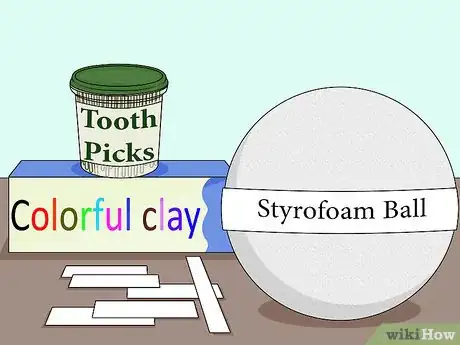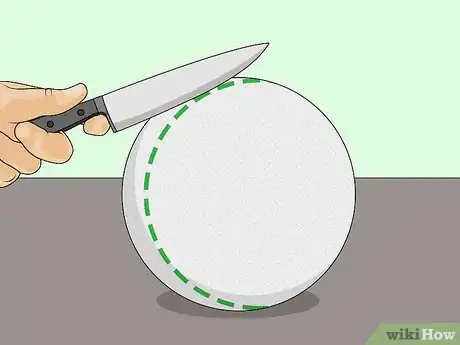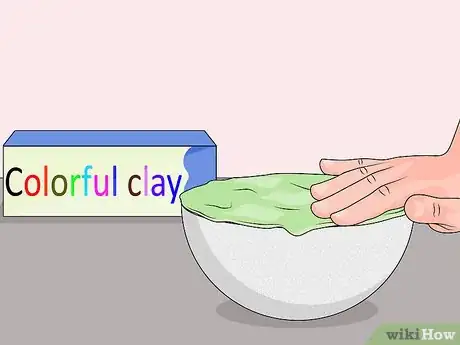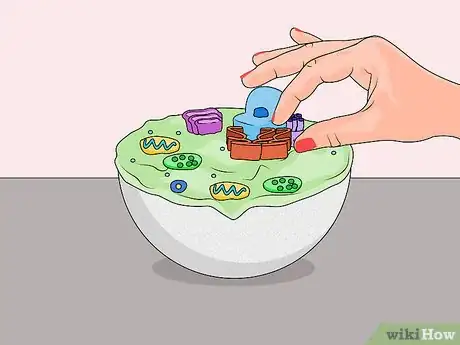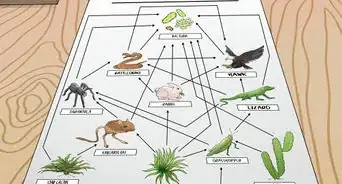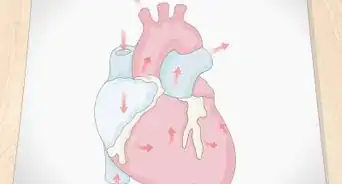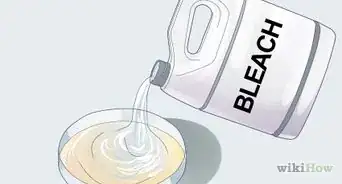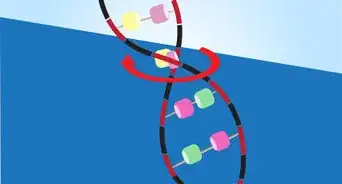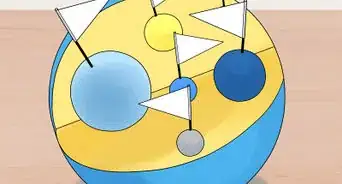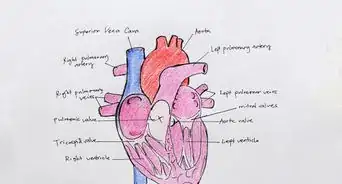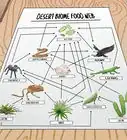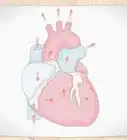This article was co-authored by Bess Ruff, MA. Bess Ruff is a Geography PhD student at Florida State University. She received her MA in Environmental Science and Management from the University of California, Santa Barbara in 2016. She has conducted survey work for marine spatial planning projects in the Caribbean and provided research support as a graduate fellow for the Sustainable Fisheries Group.
There are 9 references cited in this article, which can be found at the bottom of the page.
This article has been viewed 397,884 times.
A cell model is a 3-dimensional structure showing the parts of a plant or an animal cell. You can make a model cell with things from around your house, or you can buy a few simple items to create a fun, educational project.
Steps
Researching Model Cells
-
1Decide if you are making a plant cell or an animal cell. The shape of each cell is different, so depending on which type of cell you are building, you will need different materials.
-
2Research the parts of a plant cell. You will need to understand what each cell part looks like and what job it performs for the plant cell. Generally, plant cells are larger than animal cells and are rectangular or cube shaped.[1]Advertisement
-
3Research the parts of an animal cell. Unlike plant cells, animal cells do not have a cell wall. Animal cells can be various sizes and may have irregular shapes. Most of the cells range in size between 1 and 100 micrometers and are only visible with the help of a microscope.[4]
Making a Jello Model
-
1Gather your materials. To make a cell out of jello, you will need:[7]
- Lemon flavored jello, or unflavored jello
- Light colored fruit juice (if using unflavored jello)
- Various candies and fruits, such as raisins, gummy worms (plain and sour), gumdrops, jelly beans, grapes, mandarin orange sections, sprinkles, M&M's, jawbreakers, dried fruit, and/or hard candy. Avoid using marshmallows, as they will float on top of the gelatin.
- Water
- A large plastic resealable bag
- A spoon
- A large bowl or container
- Access to a stovetop or microwave
- Access to a refrigerator
-
2Make the jello, but with less water than the instructions call for. This will make the jello stiffer and make it easier for the cell parts to stay in place.[8]
- Heat the water to boiling, using ¾ of what is called for in the instructions. Dissolve the gelatin in the hot water and stir it carefully. Add the same amount of cold water to the mixture.
- If you are using unflavored jello, add fruit juice to the jello in place of water so the jello is a light, bright color.
- The jello will represent the cytoplasm of the cell.
-
3Place your plastic bag inside a sturdy container, such as a large bowl or pan. Slowly pour the cooled gelatin into the bag.
- Make sure there is room in the bag for all the cell components that will be added in later.
- Seal the bag and put it in the refrigerator.
-
4Wait until the gelatin is almost set, about an hour. Then, take the bag out of the refrigerator and open it.
-
5Add a variety of candies to the bag of jello to represent the parts of a cell. Make sure you use candies that are the right color and shape to match the components of an actual cell. Consider using:
- Pink Mike and Ikes for the smooth endoplasmic reticulum.
- Blue Mike and Ikes for the mitochondria.
- Disc sprinkles for the ribosomes.
- Airheads for the rough endoplasmic reticulum.
- Sour gummy worms for the Golgi apparatus.
- Warheads for the vacuoles.
- Keep in mind that if you are making a plant cell, you will need to add in a cell membrane around the jello with candy such as Twizzlers or Pixie Sticks.
-
6Create a key showing how the candies correspond with the parts of the cell. You may want to make a card with a piece of each candy glued to the card, or you can create labels by writing or typing the name of the cell part and attaching them to each candy.
-
7Re seal the completed jello model and put it back in the refrigerator. This will allow the jello to fully set, creating a sturdy cell model.
- Feel to free to take a picture of the jello model, and then eat it!
Making a Cake Model
-
1Gather your ingredients. To make a cake model, you will need:[9]
- Cake mix, as well as the ingredients to make the mix
- Vanilla icing
- Food coloring of choice
- Various candies to represent the organelles, such as blue Mike and Ikes, pink Mike and Ikes, War Heads, Air Heads, sour gummy worms and sprinkles
- Toothpicks
- Labels
-
2Make the cake in a pan, based on the type of cell you are making. Use a round cake pan for an animal cell and a rectangular shaped cake pan for a plant cell.
- Follow the instructions on the package to bake the cake. You can also set aside a little of the batter to make one cupcake to represent the nucleus.
- Let the cake cool completely and then remove it from the pan. Place it on the cake board.
- You can also make 2 9 in (23 cm) cakes to layer on top of each other if you'd prefer a taller cell model.
-
3Ice the cake. Dye the vanilla icing with the food dye, based on the color(s) you'd like to use to represent the cell components.
- One option is to make separate colored icings to represent the different layers of the cell. For example, to make an animal cell, you could use yellow icing to represent the cytoplasm and red icing on the cupcake representing the nucleus.[10]
- If you are making a plant cell, you can make colored icing to distinguish the cell wall and spread it on the sides of the cake.
-
4Place the candies on the cake to represent the organelle. It may be helpful to have a printout or image of the cell to identify the cell components as you place them on the cake. An example of good candies to use as components of an animal cell include:[11]
- Pink Mike and Ikes for the smooth endoplasmic reticulum.
- Blue Mike and Ikes for the mitochondria.
- Disc sprinkles for the ribosomes.
- Airheads for the rough endoplasmic reticulum.
- Sour gummy worms for the Golgi apparatus.
- Warheads for the vacuoles.
-
5Stick toothpicks in the cake with labels for each part of the cell. Type up the labels on a computer. Cut out each label and attach them to the toothpicks with tape before placing them on the cake next to the applicable cell component.
- Take pictures of the cake model, and then eat it!
Building a Clay Model
-
1Gather your materials. To make a clay model of a cell, you'll need:
- A small or medium sized styrofoam ball.
- A package of colorful clay (feel free to also use Play-Doh or Crayola's Model Magic)
- Toothpicks
- Labels
-
2Cut the styrofoam ball in half. The size of the ball you use depends on how detailed you want to make the parts.[12]
- Keep in mind a larger styrofoam ball will give you more room and flexibility to work.
-
3Cover the flat side of the styrofoam ball with clay. You can cover the entire half piece of Styrofoam with clay if you want to make the top of the ball a certain color.
-
4Make the different cell parts out of various colors of clay. It may be helpful to have a printout or image of the cell to ensure all of the cell components are represented.
- Be sure to use different colored clay for each component to distinguish them from each other.
- Add the components to the flat side of the styrofoam using toothpicks.
- If you're making a plant cell, remember to add a cell wall to your model.
-
5Attach labels to the cell parts. You can do this by taping the labels to toothpicks or pins and sticking the pins into the styrofoam ball next to the applicable component.
Community Q&A
-
QuestionWhat do you mean by Styrofoam ball?
 Community AnswerIts a ball that is made of white stuff called Styrofoam. If you don't know what it is, go to to your nearest craft store, like Michael's, and ask for a Styrofoam ball. They might ask you for the size - just say medium or large.
Community AnswerIts a ball that is made of white stuff called Styrofoam. If you don't know what it is, go to to your nearest craft store, like Michael's, and ask for a Styrofoam ball. They might ask you for the size - just say medium or large. -
QuestionWhere can I get these items?
 Community AnswerYou can get most of these at any craft store, or even a local supermarket.
Community AnswerYou can get most of these at any craft store, or even a local supermarket. -
QuestionHow can I make an animal cell with only Styrofoam balls?
 Community AnswerCut it in half, but instead of putting clay on, you can use colorful markers and draw the organelles onto the Styrofoam.
Community AnswerCut it in half, but instead of putting clay on, you can use colorful markers and draw the organelles onto the Styrofoam.
Things You'll Need
Jello Model
- Jello
- Assorted candies
- A large plastic resealable bag
- A spoon
- A large bowl or container
- Labels
Cake Model
- Cake mix
- Cake icing
- Assorted candies
- Labels
Clay Model
- Clay
- Styrofoam ball
- Pins
- Toothpicks and tape
- Labels
References
- ↑ https://byjus.com/biology/difference-between-plant-cell-and-animal-cell/
- ↑ http://www.enchantedlearning.com/subjects/plants/cell/
- ↑ https://www.diffen.com/difference/Animal_Cell_vs_Plant_Cell
- ↑ https://byjus.com/biology/difference-between-plant-cell-and-animal-cell/
- ↑ http://www.enchantedlearning.com/subjects/animals/cell/
- ↑ https://www.diffen.com/difference/Animal_Cell_vs_Plant_Cell
- ↑ http://www.enchantedlearning.com/subjects/animals/cell/jello/
- ↑ http://www.enchantedlearning.com/subjects/animals/cell/jello/
- ↑ http://www.weirdunsocializedhomeschoolers.com/how-to-make-an-edible-cell-model/
- ↑ http://www.weirdunsocializedhomeschoolers.com/how-to-make-an-edible-cell-model/
- ↑ http://www.weirdunsocializedhomeschoolers.com/how-to-make-an-edible-cell-model/
- ↑ https://www.youtube.com/watch?v=yZu9_cmf300
- http://www.enchantedlearning.com/subjects/animals/cell/jello/
- http://www.biologycorner.com/worksheets/cellmodel.html
About This Article
To make a model cell from clay, start by deciding whether you’re modeling a plant or animal cell, and research the parts of whichever cell you choose. When you’re familiar with the cell, cut a large Styrofoam ball in half, and cover the flat side of one half with clay to make a base. Then, use different colored clay to make the different cell parts, and attach them to the Styrofoam with toothpicks so they show the layout of your cell. Finally, write labels for the cell parts, tape them to toothpicks, and stick the toothpicks in the Styrofoam where they belong. For information from our Science reviewer on how to make a model cell using Jello, scroll down!

